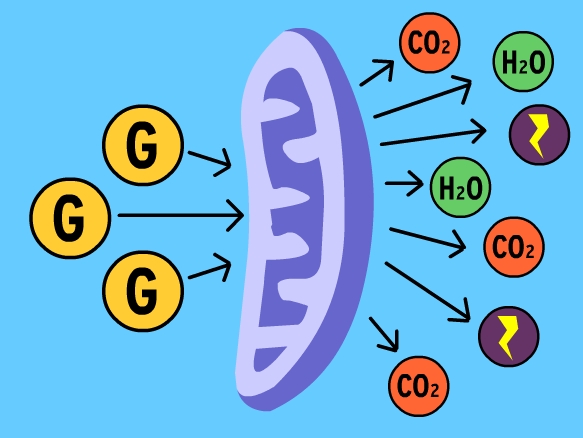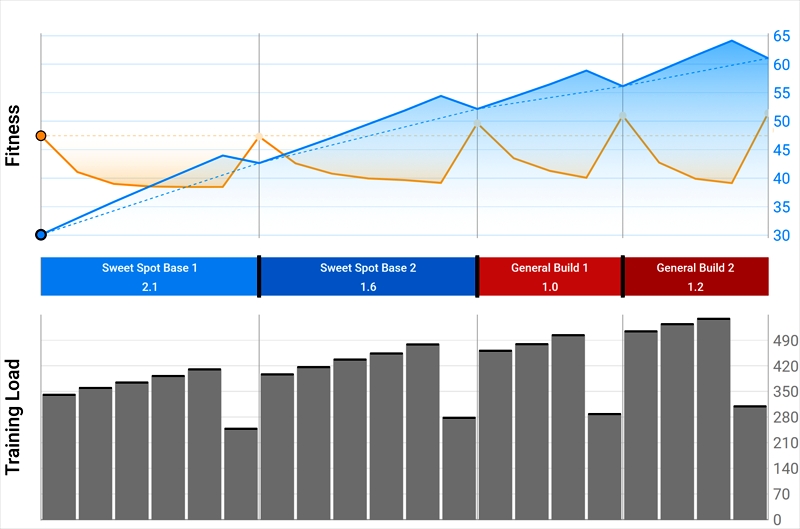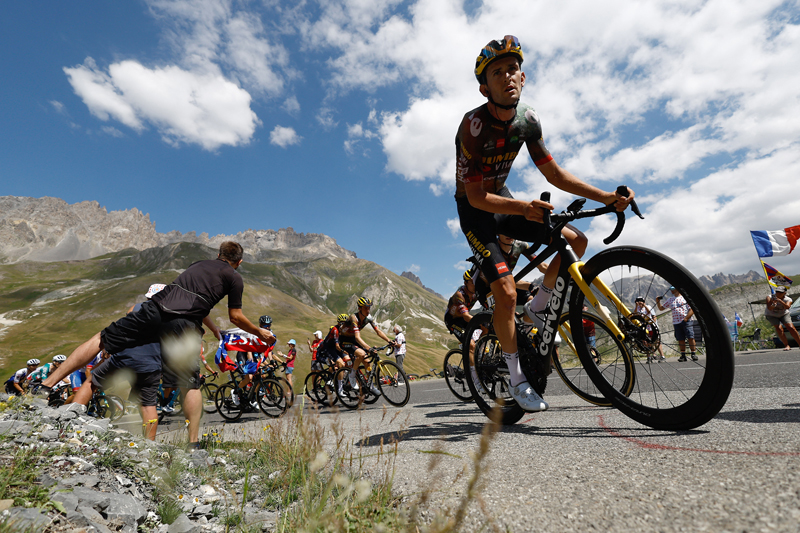You are viewing 1 of your 1 free articles. For unlimited access take a risk-free trial
Losing it: the truth about fitness loss during a layoff
What really happens to your endurance fitness if you’re forced to take an extended break from training? Andrew Hamilton takes a trip down the detraining pathway and shows how you can mitigate your fitness losses
According to the fitness mantra, you either have to ‘use it or lose it’! It might be a bit of a cliché, but it turns out that this saying perfectly sums up one of the key principles of fitness – reversibility. So long as you train, you can maintain and (hopefully) build your fitness levels. However, stop training and your fitness levels will steadily decline. The obvious question that you might ask therefore is: ‘how much fitness will I lose if I decide to take a break or I’m forced to stop training because of injury, illness or other circumstances? And how rapidly will this fitness loss occur?’How much loss?
Unfortunately, there’s surprisingly little published research on the actual fitness losses during an extended period of detraining. This is perhaps to be expected; after all, it’s very hard to recruit athletes who take training seriously and then ask them to stop training for a month or more! However, a fascinating study on detraining in triathletes looked at the cardiovascular and body composition changes in nine recreational triathletes over a 30day detraining period (during which training volume was reduced by 87%) following an ultra-distance triathlon(Int J Sports Med. 2012 Apr;33(4):253-7.).The researchers found that after 30 days of detraining there was a 4.7% decrease in maximum aerobic capacity from 4.83L/min to 4.61 litres per minute (L/min - figure 1). Meanwhile, skinfold thickness totals (a measure of body fat levels using callipers) rose 28%, from an average of 43.9mm to 55.1mm (figure 2). The total blood haemoglobin (a measure of oxygen carrying capacity of the blood) fell by 3.1% and bodyweight rose from an average of 75.1 to 77.1kgs. Taken together, these physiological changes would certainly result in a performance decrease in the average runner, cyclist or triathlete. Of particular note in the detraining study (left) was the increase in skinfold thickness, indicating a significant rise in body fat – something that has been observed in swimmers. One recent US study found that five weeks of detraining in eight swimmers resulted in an average increase in fat mass of 1.8kg and an average waist circumference increase of 1.1cmJ Strength Cond Res. 2012 Aug;26(8):2087-95). Meanwhile, maximum aerobic capacity fell nearly 10% from 46.7mls/kg/min to 43.1mls/kg/min.
FIGURE 1: DECLINE IN MAXIMUM OXYGEN UPTAKE (VO2MAX) FROM 10 DAYS BEFORE TO 30 DAYS AFTER AN ULTRA-DISTANCE RACE

FIGURE 2: INCREASE IN SUM OF SKINFOLDS FROM 10 DAYS BEFORE TO 30 DAYS AFTER AN ULTRA-DISTANCE RACE

Components of fitness
To properly understand how detraining affects fitness, it’s important to understand that there are several different components of fitness including muscular strength, muscular endurance and cardiovascular (heart, lung and circulatory) endurance – see box 1. Stop training and the performance decline in each of these components will take place at a different rate. So let’s take an imaginary well-trained cyclist and observe what happens to his or her body over a period of six months following the complete cessation of training. Let’s assume that all training stops on May 1st 2017 and track the changes that would occur.
This is your last training day for six months. After today’s ride, you store your bike away, hang up your cycling shoes and join the bulk of folk who do no regular vigorous exercise whatsoever!

After three days of inactivity, you might expect that your fitness has already begun to decline. In reality however, the losses at this stage are very minimal. In fact, if you had been training hard prior to day zero, after three days of rest, your cycling fitness is now probably enhanced! That’s because in those three days, your muscles have had time to fully recover; muscle carbohydrate stores (glycogen) have been topped up, muscle fibres damaged during hard training have been fully repaired and favourable metabolic changes in the muscles (see box 1) have had time to occur. Indeed, this peak in performance after a few days of rest is exactly the reason why tapering works and why you shouldn’t train right up to the day of a big event.

After a week’s complete inactivity, changes begin to occur in the body that result in fitness losses. For example, after three days, your blood volume can be reduced by 5-12%J Appl Physiol. 1986. 60: 95-99. This means a decrease in amount of blood your heart can pump – both in terms of amount of blood pumped per beat and total blood volume per minute. The result is that your heart has to work slightly harder to maintain a given workload on the bike. There are some metabolic changes too; after six days or so, muscles begin to become less efficient at ‘soaking up’ glucose (the body’s premium fuel for exercise) from the bloodstreamJ Appl Physiol. 1994. 77: 1532-1536 J Appl Physiol. 1996. 80: 240-244. This means that during exercise, you need to place more reliance on your (limited) muscle glycogen stores and also that you become less efficient at building up those glycogen stores after exercise. A third change is that your muscles start to become less efficient at coping with lactate accumulation during sustained efforts of hard cyclingJ Appl Physiol. 1994. 77: 1532-1536. The upshot is that you won’t be able to sustain quite the same exercise intensity before having to back off because of the burning sensation in the legs and laboured breathing!

At this point, your maximal oxygen uptake (VO2max – the prime measure of your aerobic fitness) will have declined by anything from 4-20%J Appl Physiol. 1994. 77: 1532-1536 J Appl Physiol. 1996. 80: 240-244 J Appl Physiol. 1985;59(3):853-9 J Appl Physiol. 1984.17: 230-237. Part of this stems from reduced cardiac output – not helped by the fact that the muscle mass in the pumping chambers of the heart can decrease by almost 20% after three weeks of inactivity! It also arises because of changes in muscle physiology and biochemistry that are beginning to take place. For example, the fine network of muscle capillaries built up with endurance training begins to decline. As a result, oxygen uptake in the muscles can decline by up to 8%J Appl Physiol. 1984.17: 230-237.

All of the detraining changes outlined above continue to progress but fundamental muscle changes are now becoming prominent. By now, your muscle capillarisation will have returned to your pre-training baseline (however is that it’s still likely to be higher than that in people who have never trainedJ Appl Physiol. 1984.17: 230-237 Acta Physiol Scand, 1981. 113: 9-16). In addition, alterations are taking place in your muscle biochemistry. In particular, the biochemical pathways that help your muscles burn fat for energy start to become less efficient, making it harder to burn fat while you ride, which in turn reduces your endurance capacityMed Sci Sports. 1972. 4: 91-95. J Sports Cardiol. 1986. 3: 35-45. On top of that, not only is your overall muscle mass declining (reducing your maximum power and strength), muscle fibres known as Type IIa (used during high-intensity sustained efforts) start to revert to Type IIx fibres, with greatly reduced endurance capacity. In short, your ability to maintain a full-out effort (for example, a sprint to the finish line) diminishes dramatically.

After two months of inactivity, your heart is noticeably less muscular, with the thickness of the muscle walls that comprise the pumping chambers reduced by as much as 25%Circulation. 2002 Feb 26;105(8):944-9. The muscle mitochondria are also becoming less efficient at using oxygen to produce energy in your muscles. This efficiency can decline by 25-45% up to twelve weeks after training cessationJ Appl Physiol. 1985. 59: 853-859. J Sports Med. 1986. 26: 92-100. After three months, you also begin to undergo ‘hormonal detraining’J Appl Physiol. 1985. 59: 853-859.. Hormones are chemical messengers that regulate the body’s biochemistry; as you become detrained, more stress hormones are released during exercise, which basically means that the same exercise intensity becomes more stressful for the body, which in turn increases recovery times. Figure 3 shows how these changes add up to impact your aerobic fitness.

By six months, your fitness declines have mostly stabilised. However, there are still undesirable changes taking place. For example, the actual volume of mitochondria per unit volume of muscle is declining, further reducing your ability to utilise oxygen during exerciseAnnals N. Y. Acad. Sci. 1977; 301:431-439. In addition, while you’ve lost muscle mass, you’ve almost certainly gained body fat due to a lower daily calorie burn and reduced muscle mass. So while you may not have gained weight on the scales, you will have almost certainly become ‘fatter’, with all the health risks that involves.
BOX 1: THE DECLINE OF FITNESS COMPONENTS DURING DETRAINING
There are a number of components of fitness that become ‘detrained’ when you cease training. These include:*Cardiovascular
Stop training and your blood volume falls, which means there is a decrease in the total amount of blood your heart can pump during exercise. The dimensions of the heart muscle also decrease with inactivity as does respiratory (lung) function, caused by weakening of the muscles in the ribcage. All of this reduces the amount of oxygen you can transport to your working muscles, which means your maximal performance will decline.*Metabolic
Over time, your muscles will find it harder to produce energy from your fat stores. This effectively decreases your endurance since carbohydrate stores – the other major fuel source during exercise - are quite limited whereas energy from fat stores is virtually unlimited. Also, something called ‘insulin sensitivity’ is reduced, which means your muscles find it harder to take up glucose (muscle fuel). Moreover, a less efficient oxygen metabolism means that for a given effort level, higher levels of fatiguing blood-lactate are produced in your muscles, making it harder for you to maintain high training intensities.
*Muscular detraining
In your cycling muscles, the density of capillaries (tiny blood vessels that carry oxygen to muscles) decreases and the concentration of enzymes in muscle mitochondria (the ‘aerobic energy factories’ within cells) used to release energy from oxygen also decreases. Also, muscle fibres shrink in cross section and cell-signalling hormones involved with gaining/ maintaining strength decline, leading to strength losses.
CASE STUDY: The decline of Miguel Indurain
Hailed as one of the greatest cyclists ever, Spain’s Miguel Indurain was the dominant Tour rider in the 1990’s with five consecutive wins (1991 through 1995) in the Tour de France, and two wins in the Giro d’Italia (1992 and 1993). Indurain was also the first to win the time trial when it was introduced in the Olympics in 1996, having already bagged the World Championship Time Trial in 1995.During his racing years, Indurain’s stats made mightily impressive reading: His heart/lung system enabled him to transport around 7 litres of oxygen around his body per minute, compared to 3–4 litres for an ordinary person and 5–6 litres for his fellow riders. His maximum cardiac output was measured at 50 litres a minute (a fit amateur cyclist’s is about 25 litres per minute) while his maximum oxygen uptake capacity was reputed to be around 88ml/kg/min - in comparison, Lance Armstrong’s was ‘only’ 83.8 ml/kg/min!
When Indurain retired, he gave up cycling completely. Fourteen years of inactivity later, Indurain’s body mass had increased from around 80kg in his competitive years to 92.2kgs and his maximum oxygen transport capacity had fallen to 5.3 litres per minute. Meanwhile his maximum oxygen uptake capacity had also declined to 57.4 ml/kg/ min.

The magnitude of Indurain’s decline (over 20% per decade) in one of the most genetically gifted cyclists ever is far greater than that typically observed in studies on ordinary cyclists who continue to train as they get older (under 5% per decade), and points to his inactivity rather than simple ageing per se as the main factor.
While Indurain is undoubtedly blessed with superior cycling genetics (and perhaps maintained more fitness than would be expected in lesser cyclists), the results suggested that the bulk of his fitness loss was due to detraining, which was exacerbated by his significant weight gain.
Bad and good news
The bad news is that our detraining timeline makes for fairly depressing reading. Stop training and your fitness begins to decline quite soon after, continuing to fall away the longer you stay away from training, until after six months of inactivity, you’ll be a long way behind in the fitness stakes. There is good news however; although you’ll lose plenty of fitness, you’ll likely maintain a higher baseline of fitness than someone who’s never trained. In particular, studies have shown that the muscles of previously trained people who become detrained are better at coping with lactate accumulation and have better capillarisation and mitochondrial density than lifelong couch potatoes.If you need or are forced to (eg as a result of injury) to take a short training break, there’s more good news because research shows that a relatively short break (two weeks or so) is generally not considered too disruptive providing the previous training adaptations have been achieved over a period of at least twelve weeks or moreSports Performance Bulletin 2006. 223; p4-6. Yes, there are fitness losses, but at this point, you can still regain them very easily.
But what about if training becomes very difficult for long periods of time – for example because of travel, injury, work etc? Is there any reliable way of stemming the fitness losses? Well, there’s further good news because there’s evidence that even very small volumes of the right kind of training can reduce detraining to a minimum. In particular, research shows that reducing your training volume very significantly won’t harm your fitness provided you include some very intense work such as high-intensity intervals in the training you do undertake. The key to stemming these fitness losses with just a very small volume of training seems to be to perform some very high-intensity interval sessions.
HIIT to stop detraining
Many people who experience long-term detraining do so not because of serious injury or illness, but because of their circumstances. Work commitments, travel and ongoing family emergencies are just some example of circumstances that cut into the most valuable asset anybody has – time. When time is in extremely short supply, many endurance athletes tend to assume that only five or ten minutes of training here or there is pointless, which can lead to long periods of no training, resulting in substantial fitness losses. However, research has shown that even a few short bursts of intense exercise can be remarkably effective at producing fitness (and halting its decline).The best way of performing short burst of intense training is without doubt to perform high-intensity interval training (HIIT). A number of recent scientific studies have shown that per unit of time invested, HIIT is more effective at producing the necessary changes in muscle biochemistry for fitness and performance gains than training at a constant, one-speed pace (steady-state training). For example, a 2006 study demonstrated that 2.5 hours of sprint interval training produced similar biochemical changes in muscles to 10.5 hours of endurance training and similar endurance performance benefitsJournal of Physiology, 2006; 575 (3): 901–911.
There’s also evidence that HIIT can improve maximal oxygen consumption (VO2 max – the best indicator of aerobic fitness) more effectively than doing only traditional, steady-state long aerobic workoutsEuropean Journal of Applied Physiology, 2003 89 (3–4): 337–43 J Strength Conditioning Res, 2007; 21 (1): 188–92 Med Sc Sports and Exercise, 2007; 39 (4): 665–71 Journal of Science and Medicine in Sport, 2007; 10 (1): 27–35. Even better, evidence suggests that HIIT can also increase your muscles’ ability to utilise fat for energy, which not only means they can conserve precious glycogen, thus extending endurance, but can also help those who are trying to lose some excess body fatJ Physiol 590.5, 2012; pp 1077–1084! This is significant as gains in body fat due to reduced activity is one of the changes that inevitably occurs during detraining, and which has a detrimental effect on aerobic fitness.
But just how time-efficient is HIIT? Well, studies have looked at the benefits of HIIT using very short intervals of 30 seconds or less and come up with astounding results. For example, a 2010 study found that performing 7 x 30-second sprint intervals was just as effective at increasing markers of aerobic fitness as 3 x 20-minute hard efforts despite the fact that during long intervals, the total work performed was eight times greater and the exercise duration seventeen times longer than during the sprint intervalsEur J Appl Physiol. 2010 Oct;110(3):597-606. Meanwhile, a Canadian study found that a HIIT programme consisting of six intervals of just 10 seconds sprinting performed three times a week produced significant gains in measures of aerobic fitnessEur J Appl Physiol. 2010 Sep;110(1):153-60!
Think about this; the 7 x 30-second protocol performed three times a week involves just ten and a half minutes of training per week; the 6 x 10-second protocol amounts to just three minutes of training per week – yet both had a profound positive effect on aerobic fitness levels. Of course, no coach or exercise physiologist would recommend the exclusive use of small amounts of HIIT as the basis of an endurance programme. But what it can do is to stem the degree of detraining that would otherwise occur during complete inactivity.
PRACTICAL ADVICE FOR ATHLETES TO OFFSET DETRAINING

- *If you’re a seasoned athlete (training consistently over a period of a year or more), don’t worry about taking a training break of up to two weeks; your fitness losses will not be too large, and you will regain them relatively rapidly. However, fitness losses for novice trainers or those with a low fitness base will be proportionately greater and harder to recoup.
- *For breaks of over two weeks, you’ll need some kind of intense training stimulus such as HIIT to avoid a bigger decline in your fitness.
- *There’s no hard and fast rule, but studies on HIIT suggest six to eight 30-second intervals at around 90% of your maximum effort with two to three minutes recovery in between is very effective yet not too hard on the body. For even shorter intervals (6-10 seconds), up to ten intervals at maximum effort, with a recovery of one to two minutes are recommended.
- *Perform any interval training in a manner that most closely replicates the type of event you’re preparing for (sometimes referred to as ‘specificity of training’). This means that if you’re a cyclist, performing intervals on your bike will give you the best adaptation and fitness gains. Runners, on
the other hand, should run! - *If time is tight, maximising convenience and opportunities to train is key. A ready set up stationary bike, turbo trainer or treadmill in the house or garage can make all the difference.
- *During any period where you drastically cut down on training volume, remember you will also need to curtail your calorie intake in order to prevent the performance-blunting effects of increased body fat. It’s beyond the scope of this article to go into detailed nutrition but a useful approach is to follow a ‘modified food guide pyramid’ approach (below). This emphasises fruits and vegetables, high quality proteins, whole unprocessed carbohydrates and minimises the sugary, fatty, or processed foods. It differs from the standard food guide pyramid however, in that carbohydrate intake (breads, cereals, rice etc) is not prescribed at 6-11 servings per day (the foundation of the pyramid) but can be reduced somewhat to allow for the fact that levels of activity are much lower than normal.
Newsletter Sign Up
Testimonials
Dr. Alexandra Fandetti-Robin, Back & Body Chiropractic
Elspeth Cowell MSCh DpodM SRCh HCPC reg
William Hunter, Nuffield Health
Newsletter Sign Up
Coaches Testimonials
Dr. Alexandra Fandetti-Robin, Back & Body Chiropractic
Elspeth Cowell MSCh DpodM SRCh HCPC reg
William Hunter, Nuffield Health
Keep up with latest sports science research and apply it to maximize performance
Today you have the chance to join a group of athletes, and sports coaches/trainers who all have something special in common...
They use the latest research to improve performance for themselves and their clients - both athletes and sports teams - with help from global specialists in the fields of sports science, sports medicine and sports psychology.
They do this by reading Sports Performance Bulletin, an easy-to-digest but serious-minded journal dedicated to high performance sports. SPB offers a wealth of information and insight into the latest research, in an easily-accessible and understood format, along with a wealth of practical recommendations.
*includes 3 coaching manuals
Get Inspired
All the latest techniques and approaches
Sports Performance Bulletin helps dedicated endurance athletes improve their performance. Sense-checking the latest sports science research, and sourcing evidence and case studies to support findings, Sports Performance Bulletin turns proven insights into easily digestible practical advice. Supporting athletes, coaches and professionals who wish to ensure their guidance and programmes are kept right up to date and based on credible science.













